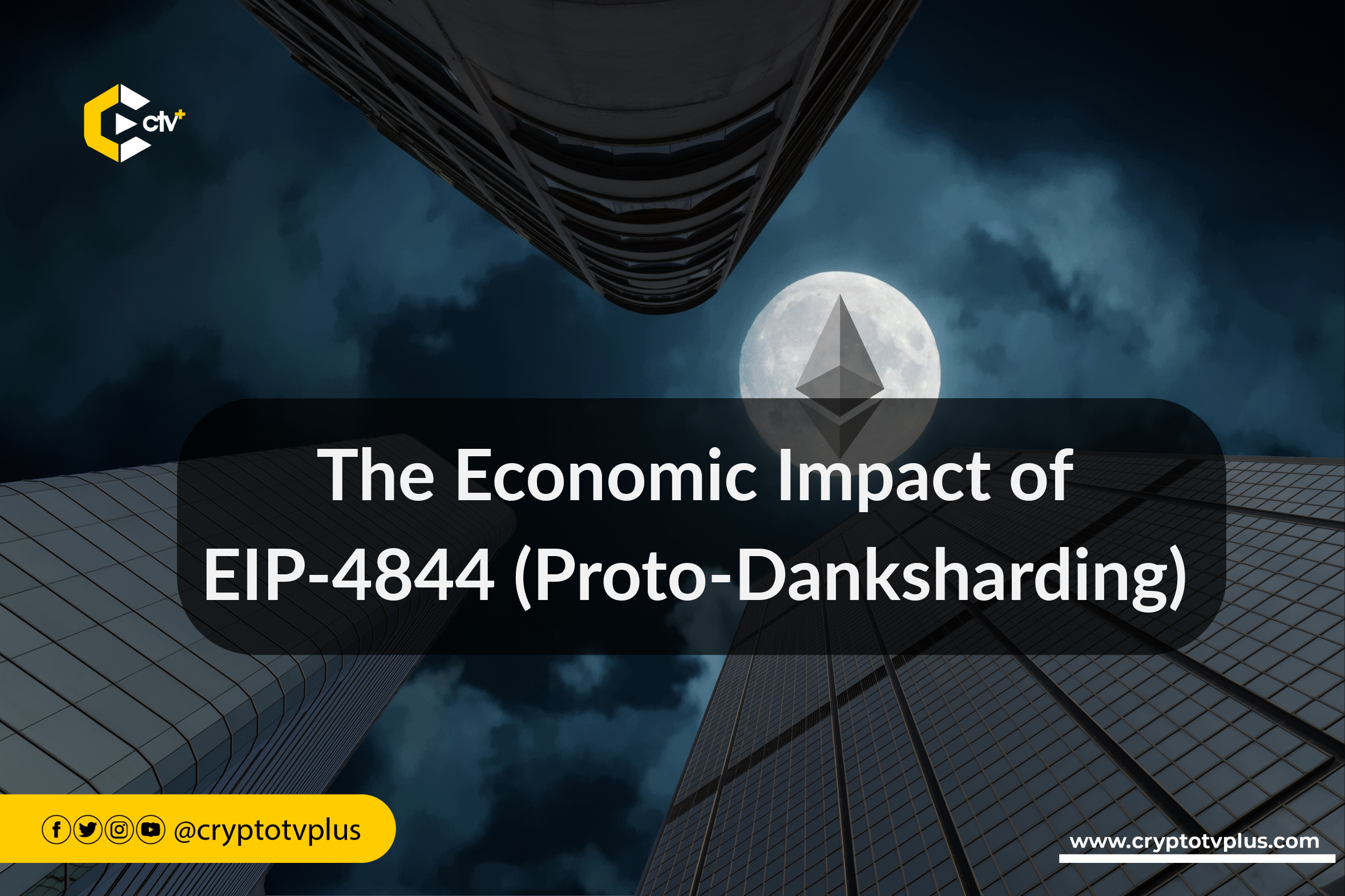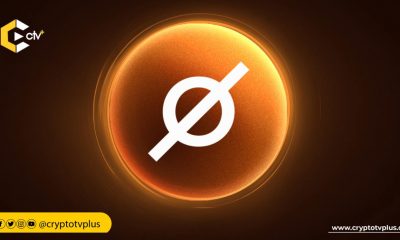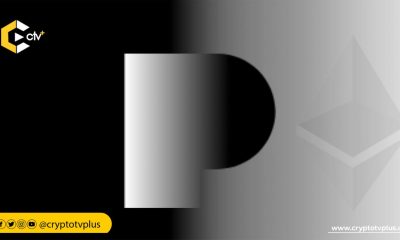Education
The Economic Impact of EIP-4844 (Proto-Danksharding)

If there is anything that is blatantly obvious in the crypto space right now, it is the fact that the sole trustless scaling option for Ethereum in the short, medium, and possibly long terms is rollups.
I’m not the only one noticing this. Neither are you. The Ethereum core developers themselves said, “Transaction fees on L1 have been very high for months and there is greater urgency in doing anything required to help facilitate an ecosystem-wide move to rollups.”
For a large number of Ethereum users, rollups are drastically lowering fees. The fees for Optimism, Arbitrum, and ZK rollups, which have better data compression and can skip incorporating signatures, are usually 3–8 times lower than those for the Ethereum base layer itself.
But the truth is that even these costs, though, are prohibitive for many consumers.
To that effect, EIP-4844 also known as Proto-Danksharding was introduced. But before its introduction, the nearest long-term solution to the long-term inadequacy of rollups by themselves would have been data sharding, which would add ~16 MB per block of dedicated data space to the chain that rollups could use. However, data sharding will still take a considerable amount of time to finish implementing and deploying.
So, by implementing the transaction structure that would be used in sharding, but without actually sharding those transactions, EIP-4844 offers a stop-gap solution up to that time. Instead, the information (blobs) from this transaction type is merely included in the beacon chain and completely downloaded by all consensus nodes (albeit it can be erased with only a brief delay).
Blobs are big, but unlike blocks, which are kept forever and are visible to the Ethereum Virtual Machine (EVM), blobs are only accessible for a brief time and are not visible to the EVM. Blobs are also located on the Ethereum consensus layer rather than the computationally intensive execution layer. Above all, blob space is far less expensive than blockspace. EIP-4844 has a lower maximum number of these transactions than full data sharding, which translates to a target of 0.375 MB per block and a limit of 0.75 MB.
This particular EIP has garnered significant attention within the crypto community, sparking discussions about its economic implications. This highly anticipated upgrade is set to drastically reduce the cost of transferring data from Layer 2 (L2) to Layer 1 (L1).
But while everyone eagerly awaits this development, there are critical questions regarding how it might affect the economics of Layer 2 solutions, particularly rollups.
Status Quo of Layer 2 Economic
Before delving into the impact of EIP-4844, it’s essential to understand the current state of Layer 2 economics. In this context, let’s look at top-line fees.
Top-line fees are defined as the total gas fees paid by users, comprising two components:
- L2 execution fees and
- L1 security fees refer to the cost of publishing transactions to Layer 1.
As of now, the average transaction fee per user for optimistic rollups stands at approximately $0.20, boasting an average operating margin of close to 50%.
Source: Artemis. xyz
Optimism and Arbitrum have the lowest average transaction fees per user and the highest operating margins. Optimism has an average transaction fee of $0.16 per user and an operating margin of 37.92%, while Arbitrum has an average transaction fee of $0.09 per user and an operating margin of 33.94%. Are they the most efficient and profitable rollups?
Although base chain fees are a little more expensive than those charged by Optimism and Arbitrum, they have a better operating margin. With an operating margin of 63.69% and an average transaction charge of $0.21 per user, they continue to operate with a potential for greater long-term profitability compared to Optimism and Arbitrum, despite being a newer and less effective rollup.
zkSync has the lowest operating margin of all the rollups. zkSync has an average transaction fee of $0.10 per user and an operating margin of 22.32%. Simply put, zkSync is not yet as efficient as Optimism and Arbitrum.
Zero-knowledge rollups also introduce additional costs for verifying proofs. For example, zkSync’s average proof verification cost hovers around $0.06 per transaction.
Assuming that zkSync’s data costs are similar to those of optimistic rollups, the average zkSync execution cost can be inferred to be around $0.16 per transaction. This is higher than the average execution cost of optimistic rollups, which is around $0.18 per transaction.
The fixed proving cost raises the per-transaction cost when the amount of transactions is minimal. Conversely, L2 execution costs increase with network congestion.
How fees will change after the upgrade?
EIP-4844 is expected to reduce data costs by at least an order of magnitude, potentially bringing the average L1 data cost per transaction down from $0.10 to $0.01. Assuming current execution costs and operating margins remain constant and that rollups pass on 100% of the cost savings to users, average gas fees per transaction could decrease to $0.10, with operating margins reaching 80% to 85%.
For zero-knowledge rollups, which typically operate with lower native operating margins than optimistic rollups, the margin might only slightly improve to close to 40%, resulting in fees per transaction of approximately $0.12.
The real challenge lies in determining where transaction fees will settle after EIP-4844. Rollups may choose to either retain the savings entirely or pass them on to users, with the most likely outcome lying somewhere in between. Rollups are profit-driven organizations, so they are unlikely to forgo fees entirely. Additionally, user elasticity in switching platforms due to higher gas fees may plateau.
But how will Optimistic Rollups respond?
Optimism and Arbitrum, the current leaders in the Layer 2 space, will wield significant pricing power in determining transaction fees post-EIP-4844. Beyond any volume surge due to cost reductions, the competition between optimistic rollups and zero-knowledge rollups will be crucial.
To gauge the impact, one approach is to calculate the volume increase required to offset top-line reductions if optimistic rollups pass a substantial portion of the cost savings to users. This approach assumes that zero-knowledge rollups will continue to charge a premium to remain competitive.
Under this scenario, optimistic rollups could maintain their competitive edge while operating at a 50% margin, passing less than 50% of savings from reduced data costs to users. This is because optimistic rollups have a strong incentive to increase their operating margins. After all, optimistic rollups are businesses that need to be profitable to survive and grow.
How will Zero-Knowledge Rollups also respond?
Zero-knowledge rollups already operate with compressed margins compared to optimistic rollups.
Following the cost reduction post-EIP-4844, they could theoretically lower their margins to remain competitive. However, this may not be in their best interest.
I think it is unlikely that zero-knowledge rollups will try to underprice optimistic rollups after the EIP-4844 upgrade. This is because zero-knowledge rollups have a higher cost structure than optimistic rollups, and they could easily operate at a loss if they tried to compete on price.
Transaction fees for zero-knowledge rollups are expected to settle around $0.12, with operating margins of around 40%. Attempting to underprice optimistic rollups would almost certainly lead to a race to the bottom and potential losses.
Concluding thoughts
EIP-4844 is a very complex improvement to the Ethereum protocol that is coupled to other system upgrades like proposer/builder separation (PBS) and the already discussed EIP-1559 blob (data) fee adjustment. It is a component of a wider roadmap.
Optimistic rollups are anticipated to maintain their competitiveness by continuously reducing their fees in a completely efficient economy. However, over time, user behavior is probably going to become less sensitive to cost decreases, which will cause the pricing war to stagnate. As a result, optimistic rollups may settle at about $0.10 per transaction after EIP-4844, failing to fully pass on the cost reductions to customers.
Real-world elements like network congestion and organic development will affect these dynamics and could also change them. As I said earlier, this piece is just to offer a perceptive viewpoint on the possible financial effects of EIP-4844 on Layer 2 rollups.
The conclusion, which can unexpectedly change the decentralized finance environment, is anxiously awaited by myself, and the crypto community at large.
























